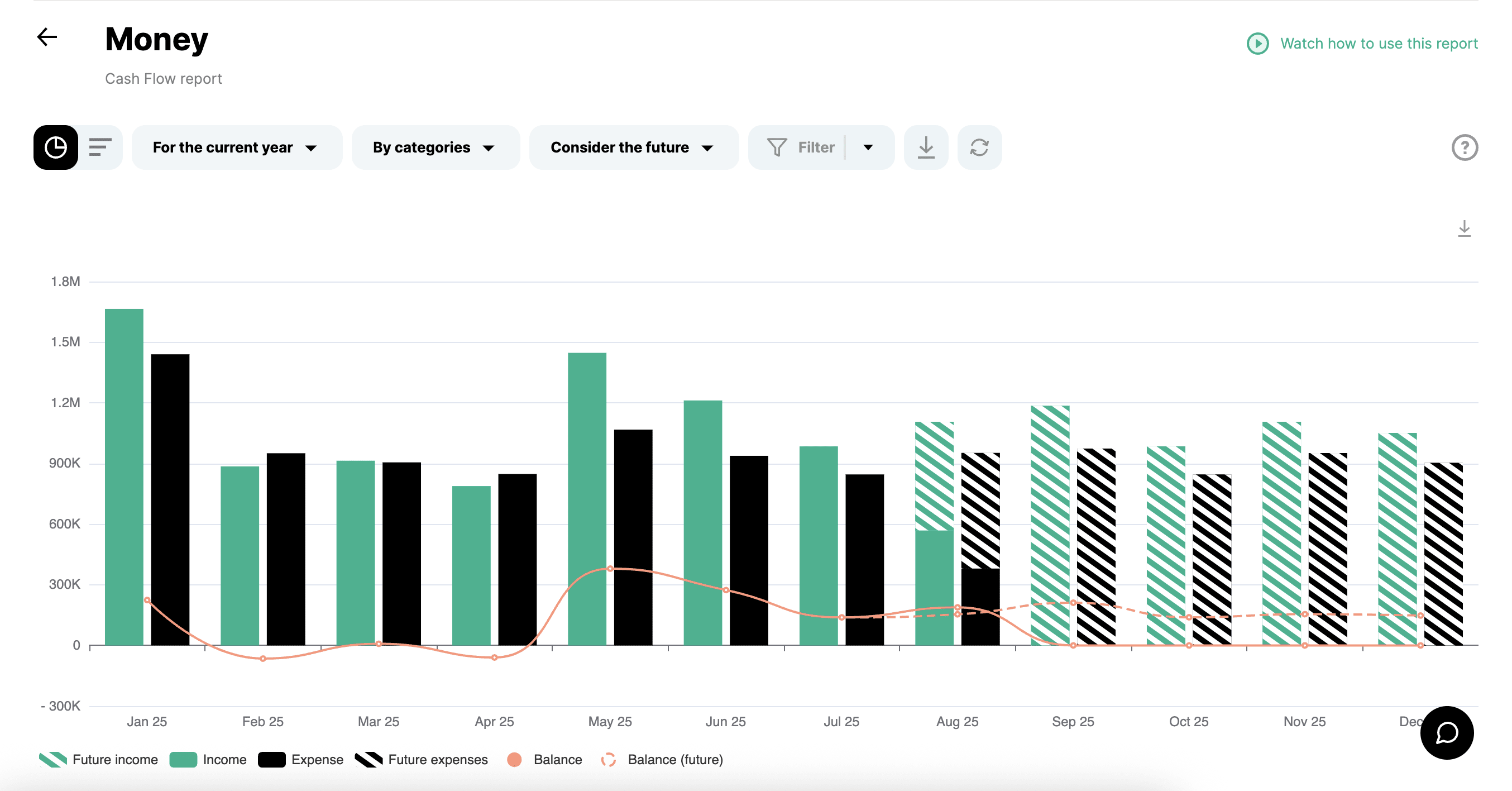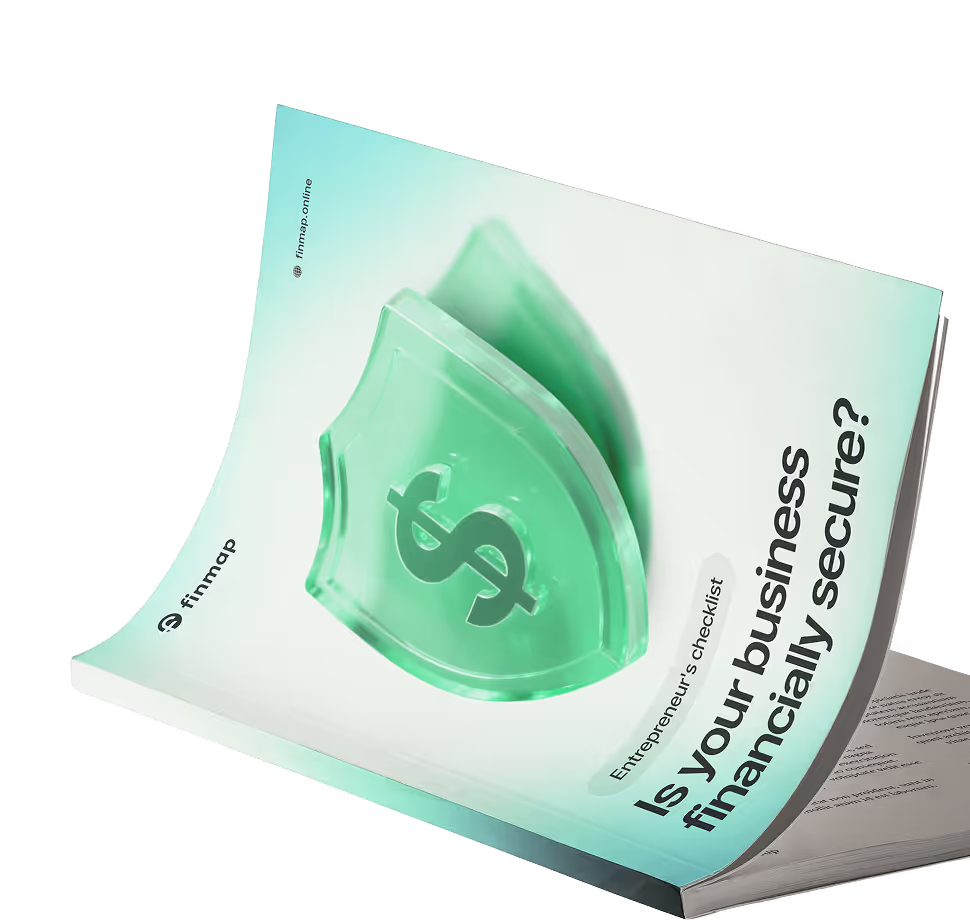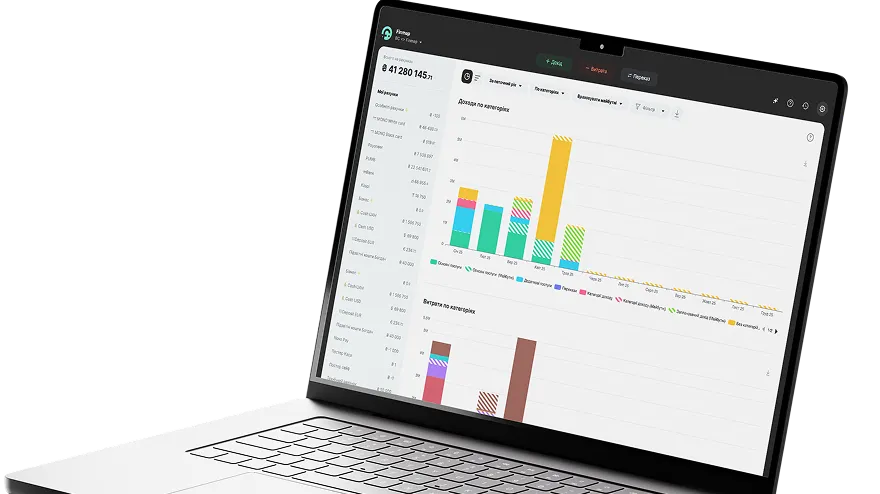Cash gaps, delayed payments to cosmetics distributors, not enough money to pay stylists, chaotic use of cash from the register — this isn’t the exception, it’s the daily reality for many salons where financial management isn’t a priority.
There’s no point in finding comfort in the fact that “everyone’s like that.” Successful salons prove the opposite: when finances are managed properly, profit, growth, and peace of mind appear.
Together with leading beauty industry experts Alina Tymoshenko and Nataliia Honcharenko, we identified three of the most common problems — and their solutions will help you regain control over money, avoid typical mistakes, and finally see your real profit.
Read to the end if you want to:
- see the full financial picture of your salon;
- anticipate cash gaps instead of constantly plugging them;
- delegate financial management without losing control;
- and start scaling — from a place of order.

Problem #1: You Don’t Know How Much Money Your Business Actually Has
As a business owner, can you answer this: how much money does your salon have at its disposal right now?
If instead of a clear number you start scrambling — checking banking apps, counting the cash in the register, messaging your team, trying to remember what was supposed to go through the POS — then this issue is already deeply rooted in your business processes.
The reason is simple: your money is scattered. Some is on business accounts in different banks, some on personal cards, some in the cash register, and some in the hands of your stylists.
How mixing personal and business money destroys your financial system.
This kind of setup leads to an even bigger problem: mixing personal and business finances.
The first — and most painful — mistake is mixing personal and business money. When one cash register is used to buy everything from studio supplies to groceries, or the day’s earnings are instantly spent on personal needs. As a result, by the end of the month, there’s no way to see a real picture of your income and expenses. — Alina Tymoshenko, mentor and author of educational programs for beauty entrepreneurs
Without a clear financial system, the owner uses any available account — whether it’s the company account or a personal card. It may feel flexible, but in reality, this approach undermines control and stability.
What this leads to:
- You can’t accurately assess the profitability of the business — injecting personal funds masks real losses.
- The business becomes dependent on the owner's personal finances — instead of evaluating financial efficiency.
- Expense tracking becomes messy — personal purchases can be misclassified in reports, skewing analytics and complicating tax reporting.
- You can’t build a financial cushion or plan investments — because there’s no clearly separated company cash flow.
- It increases financial anxiety and burnout — you don’t feel stable, even when revenue is coming in.
How to Bring All Your Finances into One System
To run your business based on numbers, you need to start with the basics — a complete list of all the accounts your salon uses. Without this, any kind of financial tracking is guesswork, not reality.
That’s why the first step to financial management in Finmap is to create a clear account structure and get the full picture: how much money you have, where it is, and what part of it is actually available for business use.
Separate business accounts are not a formality — they reshape your mindset as an owner.
Make it a rule: separate your personal and business accounts — and use them accordingly. For example, dedicate one bank or card for personal spending only, and another exclusively for business operations. Don’t mix them. Even if it’s “just convenient to transfer quickly from your personal one.”
This simple habit:
- creates a clear boundary between your life and your salon’s finances;
- reveals the true profitability of your business — without distortions;
- reduces stress by stopping you from constantly covering business costs out of your own pocket;
- enables data-based financial analysis, not intuition-based decisions.
Without clear separation between personal and business accounts, there is no real financial control — only the illusion of it. Finmap helps turn chaos into a manageable system from day one.
Problem #2: Unpredictable Cash Flow
You might be tracking daily revenue and have a rough idea of your expenses. But if you’re not planning and forecasting your cash flow ahead of time, you’re heading straight into a cash gap.
The core issue is this: income is always uneven, while expenses are constant. Without a structured financial system, the money you need simply might not be there when it’s time to pay.
What it means in practice:
- You have no clear idea how much money will be available in a week or two.
- Salary and rent payments are at risk, because decisions are made without analysis.
- Purchases happen randomly, without accounting for high and low activity periods.
Salon owners often overspend on inventory — ordering too many supplies in advance or buying things that aren’t critically necessary, without analyzing stock levels. These expenses add up and eat into the profits. — Alina Tymoshenko, mentor and creator of educational programs for beauty entrepreneurs
Cash Flow Is More Than Turnover — It’s the Key to Seasonality
Yes, beauty businesses also experience seasonality. For some, it’s a spring peak. For others — autumn. For many — the holiday rush in December. But if you don’t track and analyze your income and expenses over time, you simply won’t see the pattern.
In Finmap, it’s visible from the very first chart in the Money report — the monthly business dynamics help you quickly identify which months are the busiest.
This allows you to:
- Plan your team’s schedule in advance.
- Purchase supplies ahead of time.
- Balance workload and prioritize tasks for your team.
- Forecast potential cash gaps and avoid last-minute emergencies.
- Build a system of promotions or gift certificates to boost revenue during low seasons.

A plan isn’t just a formality — it’s confidence. It’s the confidence that at the most critical moment, you have everything under control — not running out of hair dye or supplies during the busiest booking season.
A Financial Safety Cushion Is the Foundation of a Stable Business
Another key benefit of tracking your cash flow is the ability to build a reserve fund.
The most common issue? A lack of financial safety cushion. Many studios operate month to month, and even after years in business, they remain vulnerable: any unexpected expense (equipment breakdown, sudden rent hike, or force majeure) can throw everything off track. — Alina Tymoshenko, mentor and author of educational programs for beauty entrepreneurs
When you clearly see cash surpluses in certain periods, you can intentionally set some of that money aside. Because the difference between running a business with a financial cushion and without one is massive:
Money Management: How Finmap Helps You Control Your Cash Flow
So, after gathering all your accounts into a single system, the next step toward financial order is managing your cash flow — tracking the actual movement of money both daily and in a projected mode.
How to do this in Finmap:
- Sync your accounts: transactions will be automatically pulled in from integrated banks, or you can import them or enter them manually if you work with cash.
- Tag categories for each transaction or create auto-rules so expenses and income are automatically assigned to the right line items.
- Add all planned payments and expected income — rent, salaries, subscriptions, gift certificates, etc.
- Use the payment calendar to see exactly when money is needed and whether you’ll have enough to cover expenses.
- Review your cash flow reports weekly — analyze actual balances, seasonality, and business dynamics to make timely decisions.
Finmap turns chaotic money flows into a clear system. Now you can see what’s coming — and act ahead of time. This isn’t just reacting to financial issues; it’s systematic business management.
But even if you spot seasonality and plan your finances — that’s still not a guarantee of order. Because as long as all decisions, payments, and records are on your shoulders — you are the system.
And a system that depends on one person is always vulnerable.
Problem #3: You’re Not Delegating the Tasks That Drain Your Energy
Expectation: you have your dream business, successful and running on its own.
Reality: you’re its main engine, its core process, and the only guarantee of order.
Beauty salons are often born from talent and vision. From the desire to create something beautiful, something special. But as soon as clients, a team, and expenses appear — that dream turns into responsibility.
The owner quickly shifts from a creative role into:
- the lead stylist (because no one else does it better),
- the receptionist (because someone canceled, and the schedule still needs to be filled),
- the marketer (because reels need to be posted daily),
- the buyer (because supplies need to be found, ordered, and received),
- the decorator and logistics manager (because that new shelf has to be bought and installed),
- the HR manager (because it’s up to you to choose who joins your team),
- and even the cleaner (because you can’t walk past a messy workspace without fixing it).
It’s not the finances that cause problems — it’s ignoring them.
Finances don’t call, don’t message you on Viber, and don’t wait at your door with complaints. So among your daily tasks, they’re always postponed. First, the client, the post, the order, the schedule, the team... And the finances stay in your head, in scattered notes, in empty spreadsheets.
But that’s exactly how chaos begins. That “later” turns into a cash gap, missed salaries, and uncertainty about tomorrow.
A business doesn’t grow from intuition. It grows from structure. And the first step toward growth is freeing up your time and attention. Start with what matters most — delegating financial management.
How to Delegate Financial Management in Finmap
In Finmap, you can delegate parts of your financial processes to others without losing control. There’s a Users section where you can add everyone involved and set flexible access rights — from full access to limited roles (such as access to a single account or permission to enter data without seeing analytics).
And if you don’t yet have a financial specialist on your team — use Finmap AI Copilot. It will generate a clear report, highlight weak points, suggest what to do next, and even warn you about risks you might not notice on your own.
Remember: financial management isn’t just another task — it’s the foundation of a stable business. To grow, you need to delegate, and Finmap gives you the ability to offload part of the routine without losing control.
Because your role isn’t to carry everything yourself — it’s to manage a system that works for you.
How to Avoid Financial Mistakes in a Beauty Salon: Advice from Nataliia Honcharenko
Nataliia Goncharenko is a bestselling author for beauty entrepreneurs and founder of The Concepts Beauty Business School. She firmly believes that financial management is not just an Excel spreadsheet — it’s a full-fledged business culture.
Without knowledge, discipline, and the right focus, even a profitable salon can end up just breaking even.
We asked Nataliia to share key tips that will help you take control of your finances.
1. Start with discipline
Debt, cash gaps, lack of funds for salaries — these aren’t the root causes of problems, but their symptoms. The real issue is that the salon lacks even basic financial management. And deeper than that — it’s the lack of discipline.
In the beauty industry, it’s often entrepreneurial discipline that’s missing. When an owner regularly takes money from the cash register for personal needs, it’s not a mistake — it’s a conscious decision. They choose a cash gap over stability, delayed salaries over team loyalty, and debt over growth.
Discipline is not a talent or education. It’s a personal choice you have to make every day if you want your business to survive and grow. — Nataliia Honcharenko, founder of the international business school The Concepts Beauty Business School
2. Separate the payroll fund as its own category
One of the biggest mistakes in salon financial planning is ignoring the payroll fund (PF) as a separate expense. If you pay your team a fixed percentage of revenue, the PF grows along with your income. And if the percentage is flexible — increased revenue doesn’t guarantee profit at all.
The payroll fund shouldn’t scale directly with revenue. It’s a strategic expense category that needs separate control. — Nataliia Honcharenko, founder of the international business school The Concepts Beauty Business School
Start treating the payroll fund as an independent expense category. This will allow you to realistically assess the profitability of your services, manage profits, and see where the money is going.
3. Focus on marginal profit first
Average ticket size is a metric that doesn’t give a full picture of your salon’s financial health. What does give a true picture is marginal profit — the amount left after subtracting variable costs from each service or product. This is what covers your fixed costs and generates profit.
Why marginal profit matters:
- You can see how much money each service or product actually contributes to covering the salon’s expenses;
- You get data to manage variable costs;
- You can apply dynamic pricing and build well-balanced promotional offers;
- You stop setting prices blindly and start factoring in profitability and market realities;
- You can answer the key question: what must the service be like so we can sell it at this price?
Please don’t include a made-up portion of fixed costs in your variable cost calculations. And don’t multiply consumables by 2–3–5 — that’s a myth that’s spread across the industry. If you want to learn how to calculate things correctly — consult professionals, not social media advice. — Nataliia Honcharenko, founder of the international business school The Concepts Beauty Business School
Financial stability in a salon starts with simple steps.
You don’t need to become an accounting pro overnight — it’s enough to take responsibility and be open to learning. Because it’s the systematic approach to money that separates the salon that just survives from the one that grows and becomes truly profitable.
Money under control — business grows
If you recognized your own problems in this article — that’s already the first step toward change. Next comes systematizing your finances, organizing cash flow, and finally seeing your actual profit.
Because having the best stylists, a line of clients, and a stylish interior — that all matters. But it’s accurate financial management that gives a salon stability, profit, and confidence in the future.
Finmap is your control system that:
- unites all accounts, cash registers, and expenses in one place;
- shows how much profit each service and specialist brings;
- warns you about cash gaps — before they happen;
- helps form a payroll fund and plan out payments;
- reveals where the money is disappearing — and what to do about it;
- lets you delegate accounting while keeping full control in your hands.
If you want your salon not just to function — but to generate profit — start with financial management.
Try Finmap and bring beauty to your finances!
Frequently Asked Questions:
1. Why do I need financial management if everything in the salon seems stable right now?
Because “stable” is not the same as “profitable.” Without systematic management, you don’t see where money is leaking, which service is truly profitable, or whether you’ll have enough for next month’s payroll.
2. How can I tell which services or specialists generate profit, and which ones only create expenses?
You should track each area separately: record income and expenses for each service or specialist individually. This will help you see what’s working efficiently and what needs adjustment or optimization.
3. What happens if I still mix personal and business money?
You won’t be able to accurately assess the profitability of your business. Personal spending, cash withdrawals, and impulsive purchases distort the picture. Separate accounts and clear division help you see how much the salon actually earns and where the money goes.
4. Who should manage the salon’s finances? Does it have to be a financial specialist?
Not necessarily. At first, you can manage it yourself or delegate to an administrator, financial assistant, or accountant. The main thing is a clear system, consistency, and understandable rules for everyone involved in the process.
5. What if I don’t want administrators or specialists to see all financial information?
That’s totally fine. You should configure access rights so that each person sees and handles only what’s within their responsibility — for example, recording petty cash expenses or working only with their own account. This allows you to delegate some tasks while keeping control in your hands.







